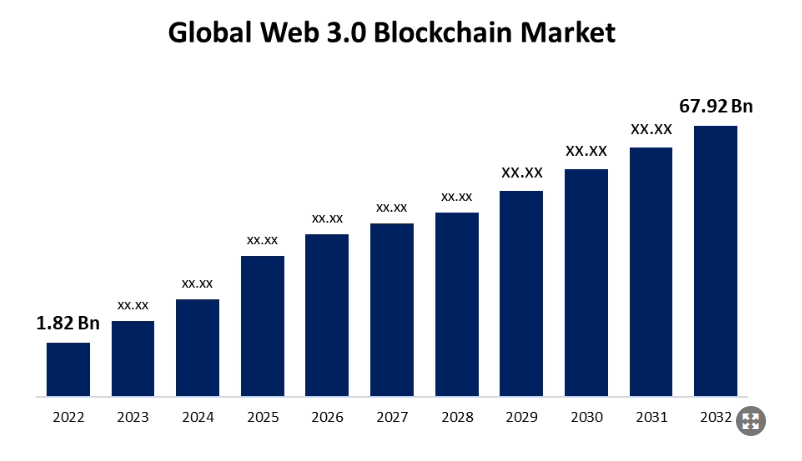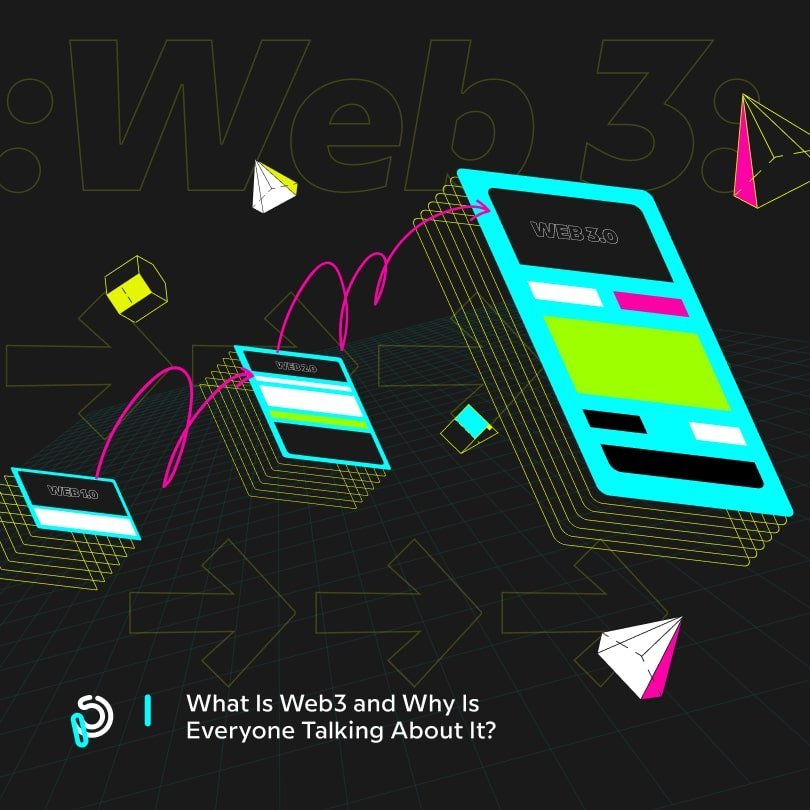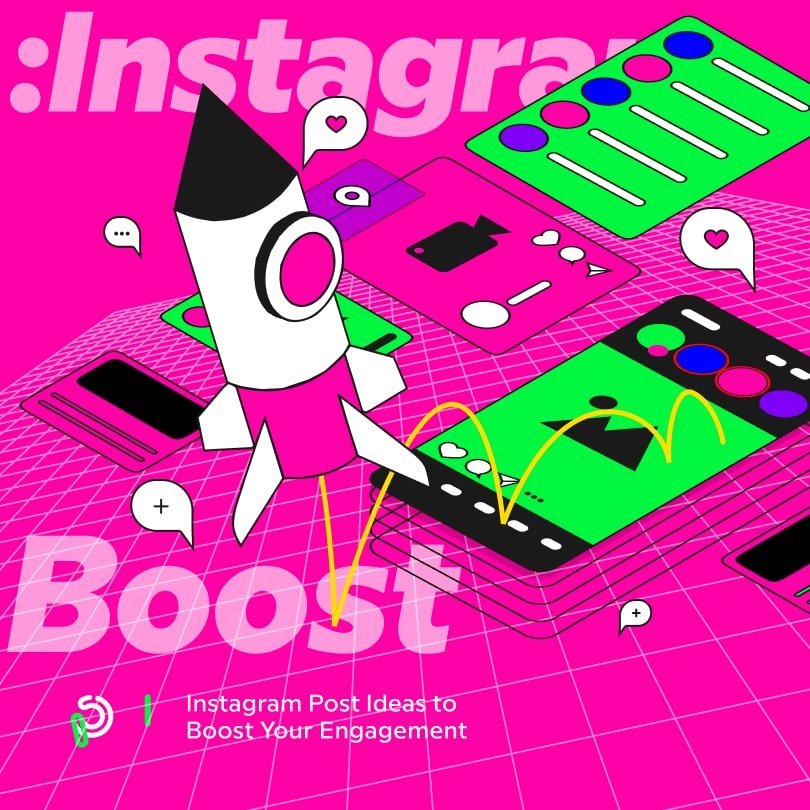Does it ever feel like the world is changing too fast to keep up with all the emerging technologies and new terms? It seems like it was only yesterday when you were trying to understand what’s the big fuss about bitcoins and whether you can order a pizza with cryptos.
Web 3.0 is among the newest additions to the nebulous tech concepts. But is this solely a sequel to the internet we know today, or there’s more to it?
Even though the definition might change with time, it’s possible to describe Web3 as the next step in the evolution of web technologies. It relies on blockchain-integrated internet, emphasizes decentralization, and gives power to the users.
According to the Global Web 3.0 Blockchain Market report, Web3 could be worth $87761.35 million by 2030 and reach a CAGR of 45.20%. This market will grow at a formidable rate in the next few years due to the continuous shifts in data ownership toward users and technology transformation.

Why does that matter, and how will it affect our lives?
Diving Into the Importance of Web3
Centralization had the central role in creating an enduring and stable infrastructure that hosts the World Wide Web and allows billions of users to onboard. But it also enabled a small number of entities to have a monopoly over decision-making.
Web3 aims to eliminate digital feudalism, in which a handful of corporate giants, such as Google, Amazon, Apple, Facebook, and Microsoft, control people’s data and security protocols.
Although one can consume, create, and publish content, one can rarely own it. That’s the principal difference between Web2 and the third Web generation.
However, various characteristics set Web3 apart from the internet that the world knew a few decades ago.
Web 1.0 (1990-2004)
The inventor of the World Wide Web, Tim Berners Lee, dreamed about creating an egalitarian mechanism that enables connection and information sharing, regardless of one’s location. Although Berners Lee succeeded in establishing standards for identifying, linking, and displaying multimedia documents online, he couldn’t stop data silos.
Web 1.0 started with companies owning websites and little to no interaction between users. Moreover, individuals rarely had the option to create content, let alone earn from its production.
As a result, that internet version is known as the read-only web. Today, Berners Lee aspires to contribute to a creation of an internet that’s closer to what he imagined initially.
He still dreams of making personal data sovereignty the principal characteristic of the internet. Berners Lee started an open-source software project, Solid, and founded a company called Inrupt to give individuals more control over their data.
Web 2.0 (2004-present)
The emergence of social media networks was the start of Web 2.0. Instead of only reading, people had the opportunity to write and interact.
Moreover, companies weren’t the sole content providers anymore. They started creating platforms that host user-generated content and allow people to communicate.
However, as more individuals started using the internet, the most influential companies recognized the opportunity to increase their profit and began controlling the traffic and value web users create. Web 2.0 also paved the path to the advertising-based revenue model.
Although individuals can now create content, they still depend on large corporations for delivery and monetization.
Web 3.0 (future)
The Ethereum co-founder, Gavin Wood, coined the term web 3.0 in 2014, sharing his vision of the future of the internet. He outlined his solution for the trust issues most people have with various service provider companies.
According to Wood, Web2 requires too much trust, and he envisioned a world where no one has an advantage over anyone else. Web3 products and services would be built on blockchain technology (not owned by a single company), allowing decentralization.
Some might argue that we already use Web3 because people can monetize their content, but corporate giants still have the final say. For example, TikTok users own their videos, but the platform’s End-User License Agreement (EULA) allows them to share and distribute users’ content as they wish.
The same goes for many Millennials’ favorite social media handle – Instagram. They might not own their users’ photos and videos, but they can use them any way they want.
However, if the nearly utopian vision of Web3 would come true, that could change.

The Core Values of Web3
As mentioned before, it’s still early to define Web3, but it’s possible to outline the main ideas that drive its creation.
- Decentralized: Internet builders and users have the control and utmost ownership over data and content instead of centralized entities. Hence, Web3 relies on open protocols and infrastructure, and community-driven networks.
- Permissionless: Web3 is synonymous with equity, and everyone has the same right to participate without fears of exclusion.
- Trustless: Users will no longer have to trust and rely on third parties for transactions and interactions.
- Native Payments: Web2 requires people to contact their financial institutions to make payments. However, Web3 would use cryptocurrency, enabling users to send and receive money online without depending on payment processors and banks.
Why Is Everyone Talking About Web3?
The reason number one everyone is talking about Web3 is that significant tech improvements typically create a lot of excitement initially. People usually start with inflated expectations, then experience a subsequent letdown, but re-enter the hype cycle after the mainstream adoption starts to take off.
But the infatuation with buzzwords and innovation aren’t the only reasons the conversation about Web3 is that loud. The public is curious whether a web where people have the ultimate ownership of their digital assets is genuinely possible.
For example, players lose access to the items they purchase in a game on Web2 if they delete their account or the mods ban them. That wouldn’t be possible on Web3 because the non-fungible tokens (NFTs) would allow direct ownership.
As a result, the game creators wouldn’t have the power to prohibit players from trading or selling their in-game items, even if they could no longer log in to their profiles. Moreover, Web3 should stop censorship by enabling people to host their data on the blockchain and manage it as they wish.
That way, if a platform changes the rules, users can leave it without losing the value or reputation they created there. Instead, they would take it to another interface sharing similar viewpoints and objectives.
Besides, decentralization is the principal feature of Web3 servers, meaning it’s nearly impossible to hack them. People will also have an easier time investing in new projects, startups, and solutions because everyone will have equal opportunities.
Decentralized Autonomous Organizations (DAOs) ensure a higher number of stakeholders have equitable and liquid ownership of a company via tokens. That means a decentralized community can own a platform through tokens that serve as their shares.
Hence, DAOs are smart contracts that enable people to use their tokens to vote on the platform’s crucial changes, costs, and code performance. Thanks to that, data is public and accessible to everyone.
Another significant aspect that changes on Web3 is identity control. Today, people must create a separate profile for every platform their use (e.g., Facebook, Twitter, Instagram).
Users must log into separate accounts whenever they want to alter their data. Although it’s possible to use social sign-in for some platforms, that raises the issue of censorship.
One could lose access to their online life in its entirety with a single click. But Web3 will enable people to use an Ethereum address to manage their virtual identity and log into different platforms with a single ENS profile.
Even though it’s common to hear mentions of the Metaverse in conversations regarding Web3, it’s still unclear to what extent these two could overlap. After all, the Metaverse is still more of an abstract idea aiming to create a 3D environment where people can interact with other users and objects.
However, the Metaverse could merge with Web3 by creating decentralized communities and eliminating gatekeepers and groups or individuals with more control and power than others. But since Facebook CEO Mark Zuckerberg is among the central players in the Meta industry, it’s questionable whether the Metaverse in development could provide a genuinely equitable, inclusive, and decentralized environment.
Is Web3 Really as Good as Tech Enthusiasts Make It Out to Be?
Various critics claim that Web3 is only a marketing buzzword, advertising products, and ideas that have existed for a few years. For instance, some may think that DAOs, smart contracts, and NFTs are groundbreaking, but they are nothing new.
You probably remember them as multisignature wallets, opcodes, and Crypto Kitties. Moreover, Web3 might advocate for an idea that sounds pure and progressive on a surface level.
But some people believe that Web3 could start a drastic societal shift and tokenization. That change could go in either direction: a better and more egalitarian world or a Black-Mirroresque reality.
Decentralized identities may sound appealing from this standpoint, but it could also lead to reputation scores hosted on the blockchain, keeping track of all our accomplishments, jobs, contributions, and interests. A crypto wallet that serves as one’s profile is potentially dangerous because its unique, readable history would be available on the chain.
Moreover, each piece of content people would post online would be permanently linked to them unless they decide to delete it. Unlike Web2, Web3 requires long-term thinking and careful content curation.
Besides critics pointing at the potential dystopian consequences, some detractors claim that Web3 has three technical issues: compute, bandwidth, and storage problems. That means it might be absurdly costly to do censorship-resistant computation. Thus, blockchain is more expensive than centralized solutions.
The most mind-boggling question Web3 imposes is who will own our data? – Whose servers will host our data, and who will have the privilege of deciding the access controls?
Web3 is a concept that lies on humanitarian pillars but ultimately fails to answer critical questions concerning data control, privacy, and regulations.
To Sum Up
It’s still early to imagine how Web3 might play out, but the first signs of internet evolution are already noticeable. That change will likely affect every industry and website structure as we know it today.
The best time to prepare for that transformation and choose custom solutions for web app development was yesterday. But since Web3 still hasn’t clashed with our reality, website owners and business leaders can still reinforce their efforts with resilient and up-to-date web platforms.





